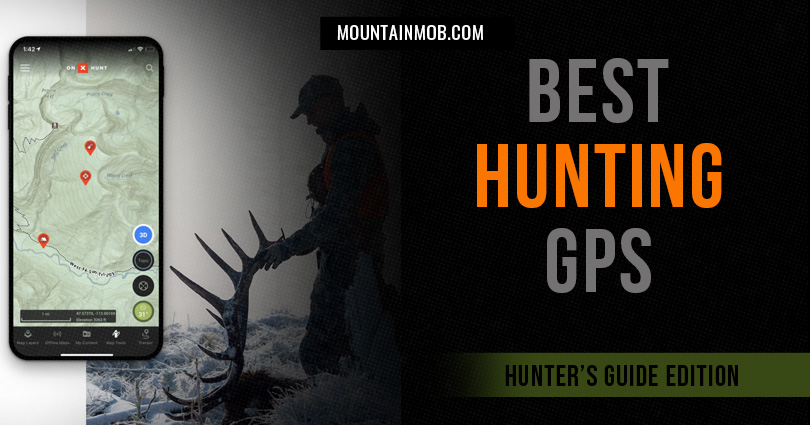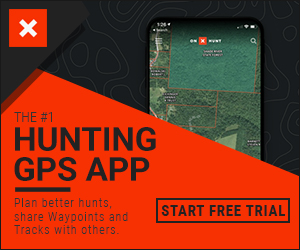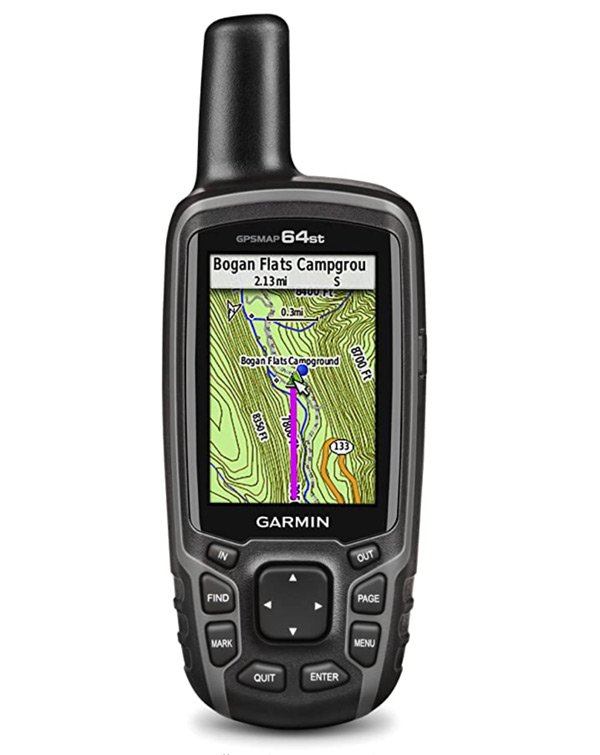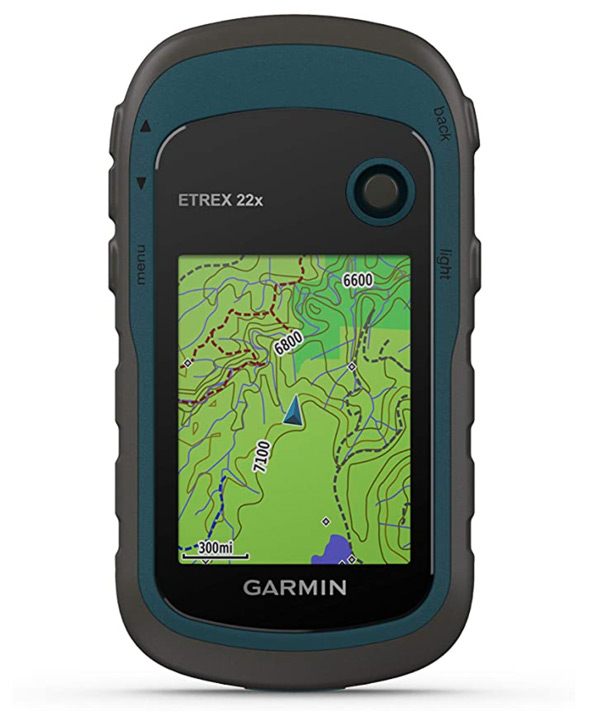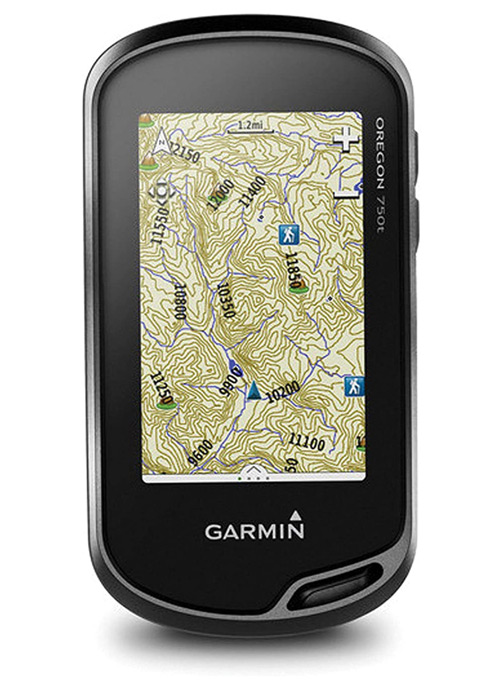Hunting
The Best Hunting GPS: A 2023 Hunter’s Edition
Hunting and outdoor GPS units have come a long way in recent years. Beyond the standard area overview and live location features, greater detail and information is required to make the most of your time in the field, especially when it comes to hunting. And when it comes to hunting, you want the best hunting gps device available.
>>> Our favorite pick is the OnX cellular GPS APP. We cover it in more details below but you can check it out here.
The pursuit of hunting is already one of fair complexity when you consider factors like ideal gear, hunting strategies and animal behavior. There are also the overriding questions: “where can I hunt?” and “where should I hunt?”.
These handheld GPS units not only act as a location and safety mechanism whilst you are out in the field, but are also becoming a popular resources for pre-hunt scouting and planning (also known as “e-scouting”).
In this article we will dive into the key features of a most modern GPS units, the differences between various models and how to find the best hunting GPS unit for your ventures into the woods.
Best Hunting GPS Factors To Consider
Shopping around at all the different models and styles of GPS units can be a little overwhelming. Here we will take a look at some of the key factors to take into consideration when determining which hunting GPS to buy, and how they may help or hinder your user and in-field experience.
Available Maps
Without the associated maps, your GPS unit would just be a moving dot on a blank screen. When it comes to hunting, detailed map options become highly valuable as they offer you information on some of the greater complexities of understanding a worthwhile and huntable area.
Locations
The locations of each map service change from GPS to GPS, and from subscription to subscription. This can either be broken down by state/province, country, region or global.
If you are only hunting, hiking and camping locally you may only need a single-state map; whereas if you are venturing further you will likely need a maps for a broader area.
Layers
The basic maps that we are used to for navigating cities and towns tend to be be ineffective when inadequate when it comes to getting the most out of your hunting. Ideally your GPS will come with a selection of maps and layers, including topography and aerial photography as a minimum.
Additional layers detailing land use boundaries and highlighting natural features are also highly beneficial when trying to find success in the field.
Satellite System
The majority of location services that you stumble across run on GPS; which stands for Global Positioning System. It is a satellite system originally developed by the US military but has since become available for civilian use worldwide.
GLONASS (Global Navigation Satellite System) is another, lesser-known system which you can occasionally find included with some GPS units. This system was also created for military purposes, by the Russian Federation, but is now also available for public use.
Having a device that includes GLONASS (alongside GPS) improves the accuracy of location as the number of available satellites the device is communicating with increases. This can be especially in more satellite-remote areas such as the north and south poles.
Screen Display
When it comes to the display of your GPS unit you want to take into consideration both screen size and quality. Conditions change regularly in the field; between low light and bright light, clear, foggy and rainy.
To be able to effectively see the features on the maps it is best to have a larger size display. Minor details can be difficult to see in areas of complex and varying terrain, so it helps to have a decent field of view. The trade off for size is portability and weight.
A device that is backlit will also make a huge difference in the visibility of the screen, helping to mitigate impeding visibility factors such as glare and reflection, as well as making it possible to use in the dark.
Battery Life
It doesn’t matter how good your GPS is if it has no battery life left in it; and a dead GPS could be a worrisome proposition if caught out deep in the woods. Power options vary between hunting GPS units; ranging from rechargeable lithium ion batteries to your standard AA or AAA batteries.
Some GPS units will have multiple power options; such as a lithium ion battery along with AA alkaline battery slots to allow for additional power backup. It is in the hunter’s best interests to either have back-up batteries on hand in the field, or a compatible powerbank to recharge your unit. A dead GPS unit can very quickly ruin a hunt.
Durability
During any given hunting season we can find ourselves in the rain, sun or snow; trudging through streams and swamps, scrambling up rock faces or perched half way up a tree. Ideally you will have a GPS unit or device capable of handling the differing weather conditions, and potentially an additional aspect of fall protection.
Hunters already have a lot on their mind and a lot of gear to worry about so it is not uncommon to mishandle a phone, a GPS unit or any other gear. If the GPS itself does not already come in a specifically durable or waterproof design, it would be wise to find a case capable of standing up to a few bumps and droplets.
Processing Speed
The processing speeds can vary widely from GPS to GPS. You want not only the unit to start up quickly, but also for each action to be responsive. Some basic and older units can be a little slow and clunky, whilst others process much more efficiently.
Hunting as a pursuit is often a test of patience and frustration management, so having the additional pain of a GPS unit that functions like 1998 dial-up internet isn’t what you want.
Touch Screen vs Buttons
Hunting GPS units are operated either by the use of buttons or a touch screen. Buttons have been used more traditionally in these devices given the durability, reliability and simplicity. Push buttons tend to work better in colder conditions and are generally usable whilst wearing gloves.
Touch screens have now also started coming into play, which may feel like an easier user experience given our recent familiarity and competence with smart phones. Touchscreens tend to be quicker to navigate, however they can also use more battery power.
Usability and Functionality
As with any other piece of technology, from your phone to your computer, the user interface can be make or break when it comes to your experience with the GPS device.
Some units are designed with specific button configurations for straight-forward navigation, whilst others require greater familiarization; working through different menus to interact with the device. It is worth considering your personal level of competence with technology whilst determining which style of GPS will work best for you.
Accessories
There are a both in-device and external accessories available with different GPS unit models. You may find devices may with a built-in camera, flashlight, or the ability to sync up with other devices.
External accessories may include carrying cases, GPS mounts for vehicle use, body straps, USB cables or rechargeable batteries.
The Best Hunting GPS Units For Hunters
OnX Hunt
OnX Hunt is a mapping service developed specifically for the American hunter. Over the past few years the use of OnX has boomed, becoming the go-to for US-based hunting, mapping and GPS tracking.
Primarily a smartphone-based application, the OnX program offers access to maps across all 50 states, with detailed outlines of hunting zones, public and private land use zones, access-ways and more.
The detail provided in the various OnX maps also opens up a whole new world of e-scouting; given the ability to see landscape, animal habitat and land access within a single program.
The Details:
Pricing:
BASIC: Free
- Includes: Basic features for a single US state including topographical and satellite maps, measurement tool, weather, GPS tracking and waypoint setting.
PREMIUM: Single US state – $29.99/year
- Includes: Basic features, plus OnX propriety basemaps, property lines, landowner information, GPS mapping tools, offline map capabilities, sharing and additional layers.
ELITE: All 50 states in the US – $99.99/year
- Includes: All basic and premium features for all 50 US states.
Satellite System: GPS
Included Mapping: OnX Mapping and Layers
Display Size / Display Screen / Input Method / Construction / Battery Life / Additional Features: Dependent on model of associated smart phone or GPS unit
Extra: OnX Hunt Chip
The OnX Chip is an SD card compatible with many models of Garmin GPS units, allowing your existing handheld GPS device to be loaded with detailed OnX hunting maps. This way you can have the option of mixing the high quality and comprehensive hunting layers of the OnX map layers, with the durability and accuracy of a specialized GPS unit.
CHIP + PREMIUM: $119.99 first year, $29.99/year thereafter
Includes: SD card chip, all basic and premium membership features.
Thoughts:
OnX is the most elaborate mapping system for hunters and serious backcountry adventurers. The depth of detail included in the OnX mapping layers gives you the opportunity to find valuable hunting information that would otherwise take hours or days of research.

The ability to have the application on your phone means you not only don’t need to carry or maintain any extra equipment, but it is likely a device you are already highly familiar with. If you still wish to have a standalone GPS unit, getting one that has OnX Chip compatibility means you can still enjoy the benefits from the OnX maps and platform.
Garmin eTrex 10
The Garmin ETrex 10 is a simple GPS model designed to give you basic location and map function wherever you need to go.
Using the Garmin Basemap program, this device’s focus is primarily on displaying infrastructure and locations (not too dissimilar to a car GPS unit), to give you a general understanding of where you are, without the additional context of topography and layered area maps.
The Details:
Price: $109.99
Satellite System: GPS and GLONASS
Included Mapping: Garmin Basemap
Display Size: 2.2 inches
Display Screen: Transflective, monochrome
Input Method: Button
Construction: IPX7 waterproof/weatherproof
Battery life: Lasts up to 25 hours with option of AA, Lithium or NiMH batteries
Thoughts:
The ETrex 10 is an entry-level model in its most raw state.
With the dual satellite system, long battery life and basic mapping, these units are best for venturing and traveling along the beaten path; where color screens, high level detail or any other bells and whistles are not required.
Garmin GPSMAP 64st
The Garmin GPSMAP 64st is your standard, decent-quality, middle of the road GPS setup.
The TOPO US 100k maps include waterways (everything from large lakes to seasonal streams), as well as boundary markings on state and local parks, wilderness areas and campgrounds.
This device includes features such as a compass, altimeter and SD card capability to allow you to add any additional maps to your GPS unit. The quad helix antenna along with the dual GPS/GLONASS satellite systems help you to get regular and consistent signal.
The Details:
Price: $349.99
Satellite System: GPS and GLONASS
Included Mapping: TOPO US 100k, Garmin Basemap, additional maps can be loaded.
Display Size: 2.6 inches
Display Screen: Transflective 65k color TFT screen
Input Method: Button
Construction: IPX7 waterproof/weatherproof
Battery life: Lasts up to 16 hours with option of AA, Lithium or NiMH batteries
Additional Features:
- 3-axis compass
- Barometric altimeter sensors
- OnX Chip and SD card compatible
- Wireless connectivity
Thoughts:
The GPSMAP 64st is a user-friendly GPS model, with a high resolution color display.
Additional features and focus on increasing the reliability of its location services (satellite systems and antenna) means you’ll have a unit you can trust even in low-signal areas, such as deep canyons, forests or the Arctic.
Garmin eTrex 22x
The Garmin ETrex 22 is a button-input unit which runs TopoActive mapping. These maps give not only the basic street and area maps, but also additional detail such as terrain contours, park regions, basic waterways and summits.
This device has a color screen and microSD card card slot, allowing you a better user experience and map-adding ability.
The Details:
Price: $199.99
Satellite System: GPS and GLONASS
Included Mapping: TopoActive Maps, Garmin Basemap, additional maps can be loaded.
Display Size: 2.2 inches
Display Screen: Transflective 65k color TFT screen
Input Method: Button
Construction: IPX7 waterproof/weatherproof
Battery life: Lasts up to 22 hours with option of AA, Lithium or NiMH batteries
Additional Features: OnX Chip and SD card compatible
Thoughts:
The ETrex 22 is best used for travel and casual outdoor adventure such as camping, cycling and hiking; without venturing too deep into the backcountry, as the additional compass and altimeter features are omitted from this model.
Garmin Oregon 750T
The Garmin Oregon 750T is a high end GPS unit with a large touchscreen display and many additional features; including a flashlight and 8 megapixel camera.
The TOPO US 100k mapping, compass, altimeter give you more confidence venturing into the backcountry, and the access to a camera, wireless connectivity and extra memory offers the ability to better upload your adventure data and experiences.
The Details:
Price: $449.99 – $549.99
Satellite System: GPS and GLONASS
Included Mapping: TOPO US 100k, Garmin Basemap, additional maps can be loaded.
Display Size: 3.0 inches
Display Screen: Transflective color TFT
Input Method: Touchscreen
Construction: IPX7 waterproof/weatherproof
Battery life: Lasts up to 16 hours with option of AA, Lithium or NiMH batteries
Additional Features: 8 megapixel auto-focus camera
- Flashlight
- 3-axis compass with accelerometer
- Barometric altimeter sensors
- OnX Chip and SD card compatible
- Wireless connectivity
Thoughts:
The Oregon 750T is one of the more involved GPS units on the market. The higher price point is justified by the inclusions of a decent quality camera, flashlight, wireless connectivity and a touchscreen display to make it a more engaging user experience.
If you wish to photograph and geo-tag locations with your GPS and connect your adventure data to any other media or platform, this model should serve you well.
Garmin Foretrex 401
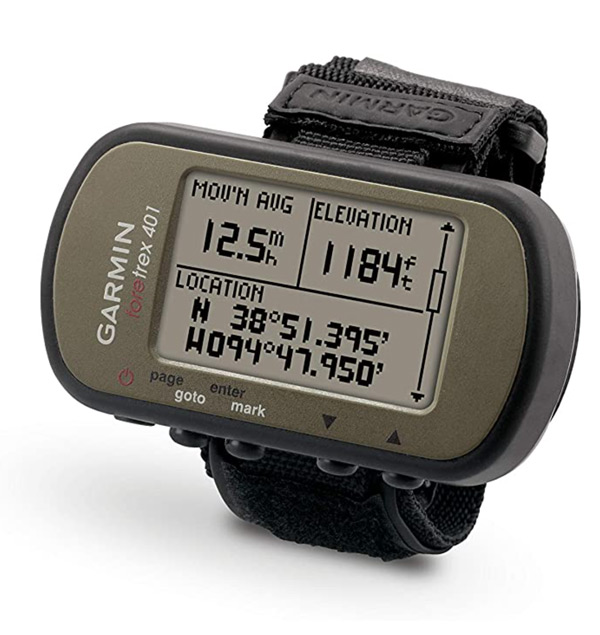
The Garmin Foretrex 401 is a lightweight GPS unit; using simple mapping, a small black and white LCD display and button input. One of the prime benefits of this device is its portability, given that it also comes with a mounting strap for your arm or wrist.
This model includes a compass as well as a retrace function, which helps you to retrace your steps and find your way back on those missions into the wilderness or down unfamiliar trails.
The Details:
Price: $199.99
Satellite System: GPS
Included Mapping: Garmin Basemap
Display Size: 1.6 inches
Display Screen: Black and white LCD
Input Method: Button
Construction: IPX7-rated waterproof/weatherproof
Battery life: Lasts up to 17 hours with AAA batteries
Additional Features:
- Built in altimeter
- Electronic compass
- Retrace steps function.
Thoughts:
The Foretrex 401 is the kind of GPS unit you would expect to see strapped to the arm of a trail runner. The simple function, small design and body-mountability make for a handy unit when you don’t wish to get lost, but also don’t want to carry anything too bulky.
Although the mapping and practicality may not be adequate for serious hunting missions, this device can still be a decent addition for casual outdoor adventures; such as hiking or skiing.
Tips for Using a GPS for Hunting
There are a few things that you can do to get more out of your hunting experience using your GPS, beyond the utilization of your unit’s primary features. Here are a couple of basic tips:
E-Scouting with Waypoints
In the build up to your hunting season, pre-marking waypoints in your GPS unit can really benefit the quality of your hunt and field scouting. To do this, place colored waypoints on key areas of interest, potential animal habitat locations or any other spots that peak your curiosity.
Once you’ve checked it out in person, change the color of the waypoint to another color representing whether the spot appears to be prime, worth another look, or not worthwhile. Some GPS units may allow you to input notes against the waypoint, which helps you to remember what the area looked and felt like, along with anything you saw, such as animals, sign (tracks, rub marks, scat) or otherwise.
The OnX website makes E-Scouting a piece of cake. You get Google Earth type features and views but you’re able to add all sorts of way points and then immediately sync them up with your mobile device.
Offline Map Reminder
One of the biggest things to remember before venturing into the field is that if you have a device that does not have all maps pre-loaded (irrelevant of any web connection), to make sure that you download the mapping of your hunting area prior to venturing into the field. It makes for a difficult trip if you find that your imagery is not properly loaded.
Summary
Having the best hunting GPS unit is essential for any hunter or outdoors adventurer. Hunting itself is a challenging pursuit, and a quality GPS device or application will go a long way to improving your success and reduce the stress of your missions into the wild.
The ability to set waypoints on areas of interest, either during pre-hunt planning or in the field, will mean you get a clearer and more accurate understanding of your hunting environment.
Determining which hunting GPS unit best suits you will come down to which features you intend on really utilizing; whether you want a basic GPS to use as a safety net, a top of the line unit for venturing to the ends of the earth, or prefer the ease of loading it all directly into your smartphone.
